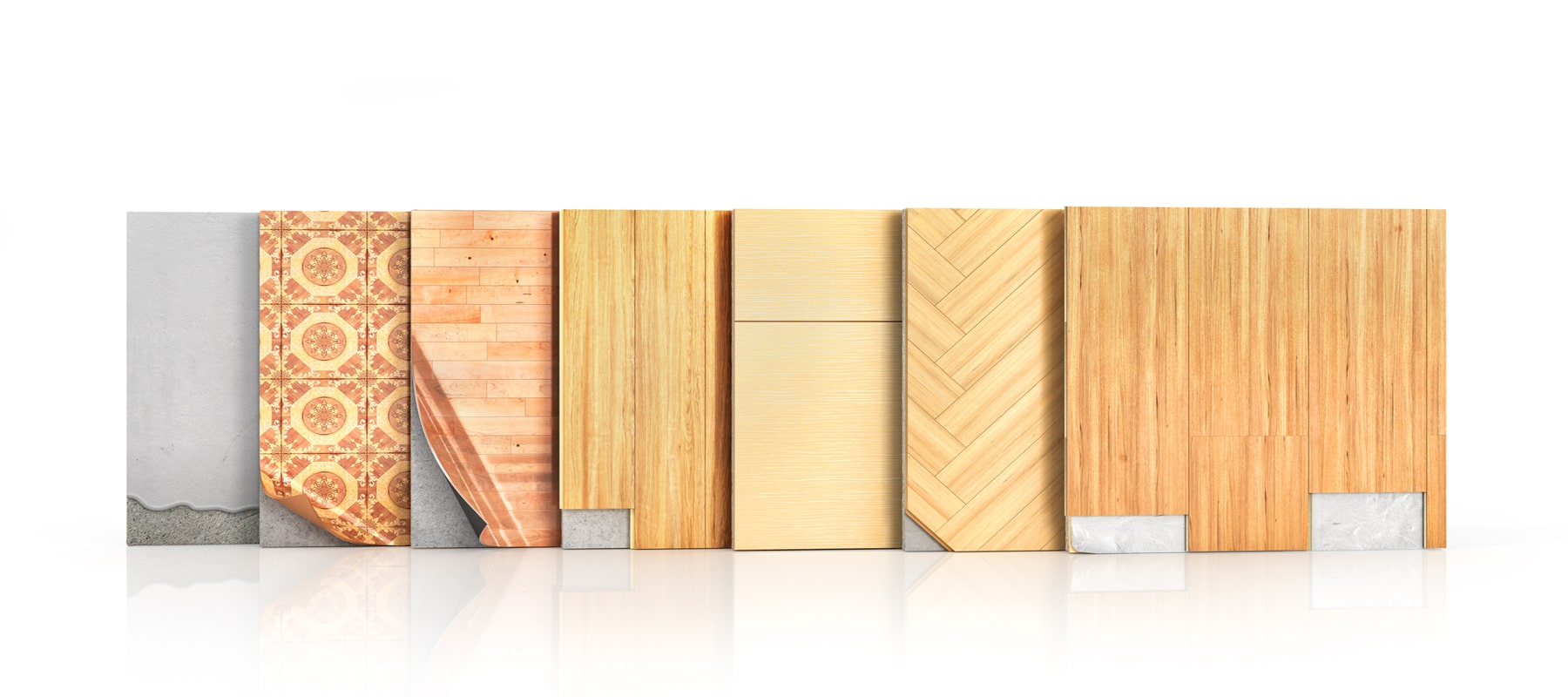How Much Does Bamboo Flooring Cost?
Last Updated: January 14, 2022
On This Page
Bamboo is a very attractive and durable flooring surface that offers the beauty and performance of a natural wood floor at a fraction of the cost. In this buying guide you'll learn about the types and costs of bamboo flooring.
Vertical Grain Bamboo #
Also known as side-pressed bamboo, this type of bamboo flooring has a one-ply (one layer) construction. Strips of bamboo are laid out vertically and glued, then pressed together to form one solid bamboo flooring board. The strips are laid on edge, creating a cleaner and more uniform appearance.
Horizontal Grain Bamboo #
Horizontal grain bamboo (or flat-pressed bamboo) has three glued and pressed layers (3-ply). This product is the most common bamboo flooring option. Its prominent grain pattern is a favorite among wood flooring enthusiasts.
Strand Bamboo #
Unlike other bamboo floors, strand bamboo does not have a layered construction. Instead, it is made from hundreds of individual "strands" that are woven together then compressed and fused under intense pressure. In terms of hardness and durability, there is no better bamboo flooring option.
Engineered Bamboo #
Engineered bamboo is a relative newcomer to the bamboo flooring family. This material, with a rating of 3,000 on the Janka hardness scale, is the hardest wood flooring commercially available (oak, by comparison, ranges from 1,000 to 1,400). The extreme harness of engineered bamboo is achieved, in part, by using the strand pattern technique described above.
When you hire a contractor to complete the work for you, they will add fees for the installation of the bamboo flooring. Those costs will depend on the area in which you live. It is wise to get at least three different contractors to give you quotes for the work. Then you can decide which of them is offering you the best overall deal. You can also shop for Bamboo Flooring and find great deals online.
Bamboo Flooring Considerations #
- Bamboo flooring planks should be between 5 and 6 feet long. If they are any shorter, it means the bamboo was harvested too early and will not have the qualities that a fully mature bamboo plant has.
- Bamboo, unlike other wood flooring products, is considered a "green" building material. Whereas an oak tree may take up to 100 years to reach maturity, an entire bamboo forest can be regrown in as little as 5-6 years. This rapid growth is explained by the fact that bamboo is actually a type of grass.
- Some bamboo products are available as a "floating" floor – meaning each strip of bamboo is only attached to its' neighboring strip (and not a subfloor). This style of installation is useful for customers on a budget or for a substrate that is warped and not perfectly level.
Bamboo Flooring Costs #
The following prices are based on a typical 12 x 15 foot room (180 square feet). Keep in mind that an irregular shaped room, removal of old flooring material, and/or a custom layout pattern will all add significantly to the project cost.
- Expect your local home improvement box store to have bamboo flooring available for $3 to $6 per square foot ($540 to $1,080 for a 12 x 15 room).
- If you choose to hire a professional to perform the installation, expect to pay an additional $5 to $8 per square foot for this service. For a 180 square foot room, installation would cost $900 to $1,440. Keep in mind this cost reflects new installation over an existing structurally sound floor.
- Complete installation that includes removing the existing floor can bump up labor costs to around $20 per square foot ($3,600).
- Installing bamboo as a floating floor can cut installation costs by as much as 25%.
